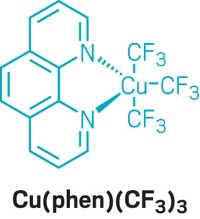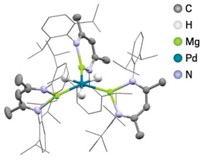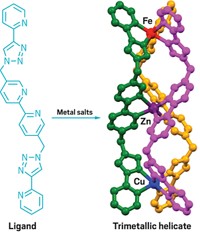Advertisement
Grab your lab coat. Let's get started
Welcome!
Welcome!
Create an account below to get 6 C&EN articles per month, receive newsletters and more - all free.
It seems this is your first time logging in online. Please enter the following information to continue.
As an ACS member you automatically get access to this site. All we need is few more details to create your reading experience.
Not you? Sign in with a different account.
Not you? Sign in with a different account.
ERROR 1
ERROR 1
ERROR 2
ERROR 2
ERROR 2
ERROR 2
ERROR 2
Password and Confirm password must match.
If you have an ACS member number, please enter it here so we can link this account to your membership. (optional)
ERROR 2
ACS values your privacy. By submitting your information, you are gaining access to C&EN and subscribing to our weekly newsletter. We use the information you provide to make your reading experience better, and we will never sell your data to third party members.
Synthesis
Golden Ring With Aesthetic Appeal
Uniquely structured molecular gold-carbon complex could lead to improved organic group transfer reagents for catalysis
by Stephen K. Ritter
April 1, 2013
| A version of this story appeared in
Volume 91, Issue 13
Metal-oxygen-metal linkages in organometallic complexes underpin many applications in heterogeneous catalysis and in electro-optical and magnetic applications. But little is known about less common metal-carbon-metal linkages and the role they might play in catalysis and electronics. In a bid to learn more, Anthony F. Hill and coworkers at Australian National University have been exploring the synthesis of metallacarbyne complexes of the type LnM≡C–M´L´n, where M represents different metals and L various ligands. They have now discovered that the reaction between a W≡C–Sn version of the complex and a gold reagent leads to an unprecedented tetrameric gold-carbon ring (J. Am. Chem. Soc., DOI: 10.1021/ja400128h). Hill says making the Au4C4 ring complex (shown) is very much a case of aesthetic appeal, as he doesn’t anticipate that the complex will have any direct application to catalysis or any interesting photophysical properties. However, monomeric versions of the gold carbyne might serve to expedite transfer of carbido groups from tin to palladium in a catalytic manner. “A long way down the line, it will be interesting to see if these carbyne complexes do indeed have a role to play in molecular electronics,” he adds.





Join the conversation
Contact the reporter
Submit a Letter to the Editor for publication
Engage with us on Twitter